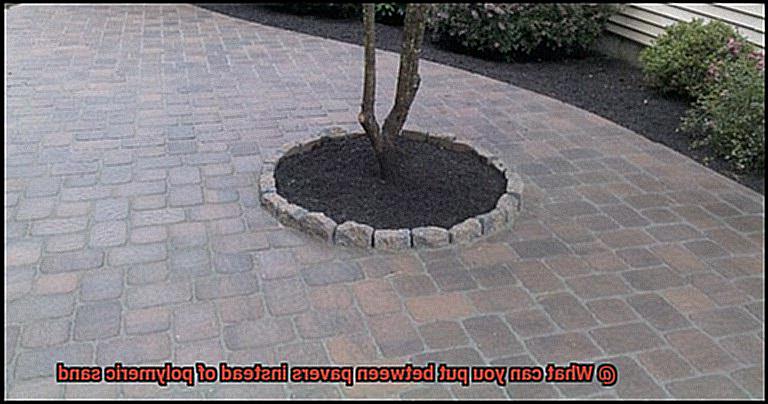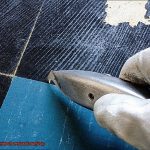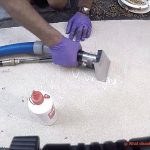Looking for an alternative to polymeric sand for your paver project? We’ve got you covered.
Sure, polymeric sand is popular, but there are other options out there that might just tickle your fancy. In this blog post, we’ll explore a few alternatives that can give your pavers stability and keep those pesky weeds at bay.
So grab a cup of joe, get cozy, and let’s dive into the enchanting world of pavers and their alternatives.
What is Polymeric Sand?
Contents
Creating a stunning and long-lasting outdoor space requires attention to detail. From carefully selected pavers to meticulous design, every element contributes to the overall aesthetic appeal. One crucial but often overlooked component that plays a significant role in the stability and longevity of your outdoor surfaces is polymeric sand.
What is Polymeric Sand?
Polymeric sand is not your ordinary sand. It is a specialized blend infused with polymer additives. When activated with water, these additives work their magic, binding the sand particles together. The result? A solid and durable joint between your pavers or stones.
Unlike regular sand, polymeric sand hardens, preventing any shifting or movement over time. This creates a stable surface that can withstand heavy foot traffic and various weather conditions.
Benefits of Polymeric Sand:
Strength and Durability:
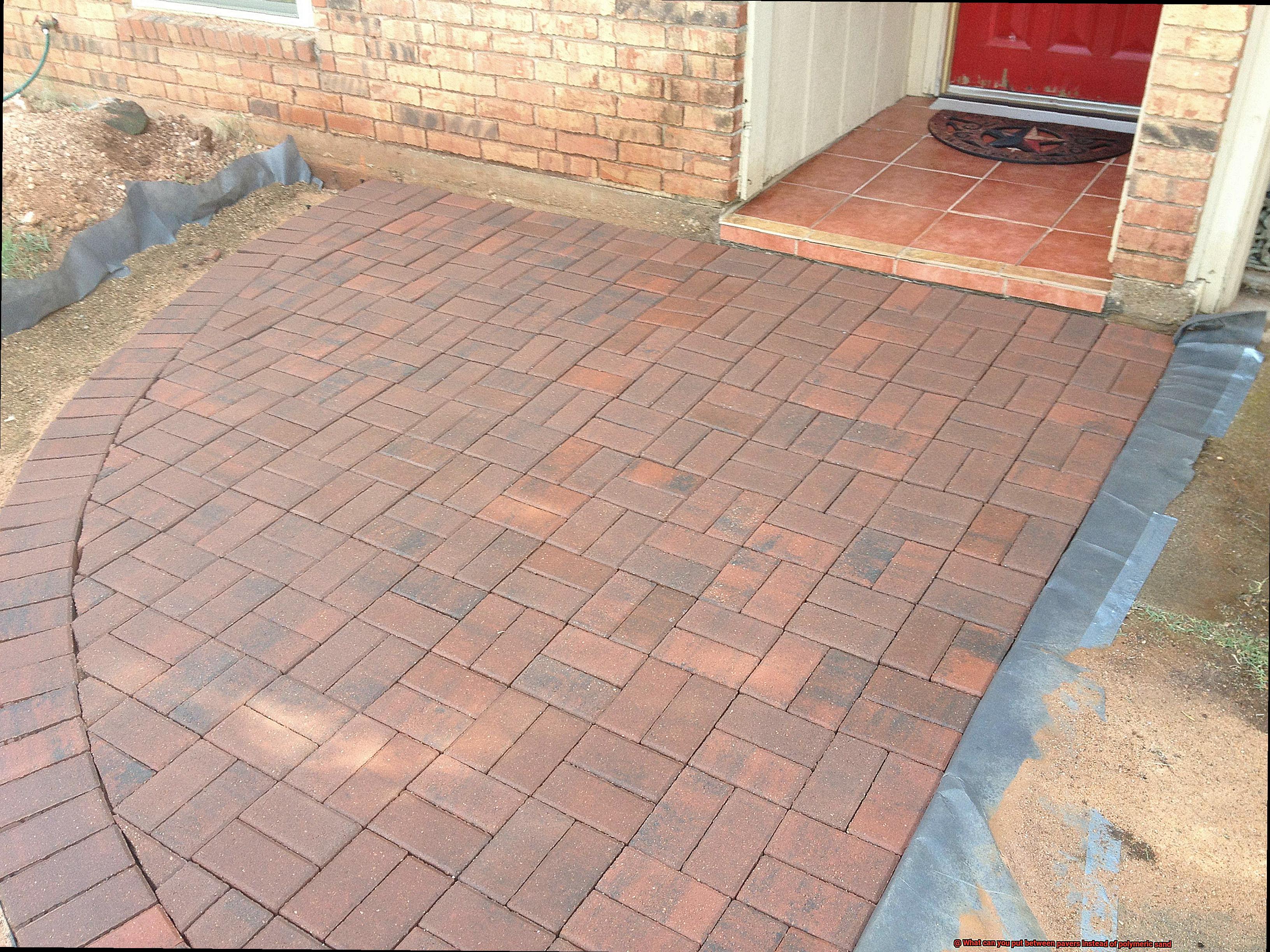
The hardened polymeric sand forms a robust bond between the pavers, ensuring they stay securely in place. Say goodbye to gaps and hello to stability. This means less risk of erosion or damage caused by freeze-thaw cycles or heavy rainfall.
Weed and Insect Resistance:
Imagine a world without pesky weeds and annoying insects invading your outdoor spaces. With polymeric sand, this dream becomes a reality. The tightly sealed joints created by the sand leave no room for unwanted vegetation or pests to take root. Keep your outdoor spaces pristine and hassle-free.
Aesthetic Appeal:
Who said functionality can’t be beautiful? Polymeric sand comes in a variety of colors to match different types of pavers or stones. Whether you want a natural blend that seamlessly integrates with your surroundings or a vibrant contrast that makes a statement, polymeric sand has got you covered.
Achieve the desired visual impact and give your outdoor space a polished and finished look.
Installation and Considerations:
Installing polymeric sand is a breeze. Once you have prepared the base and laid the pavers, it’s time to spread the sand over the surface and sweep it into the gaps. Remove any excess sand, and then comes the exciting part – lightly misting the area with water.
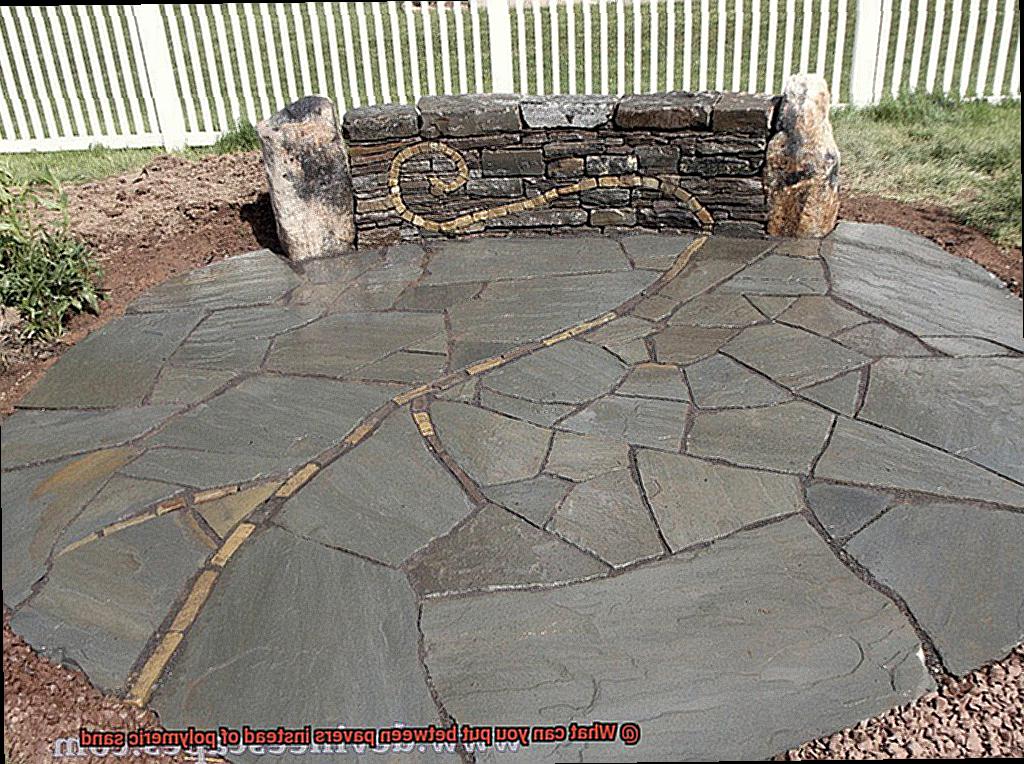
This activates the polymer additives, triggering a chemical reaction that binds the sand together, creating a firm joint.
However, keep in mind that polymeric sand may not be suitable for all projects or conditions. In areas with heavy rainfall or poor drainage, alternative options may be more appropriate. Consider using regular sand, crushed stone, mortar, or even permeable paver joint fillers based on your preferences and project requirements.
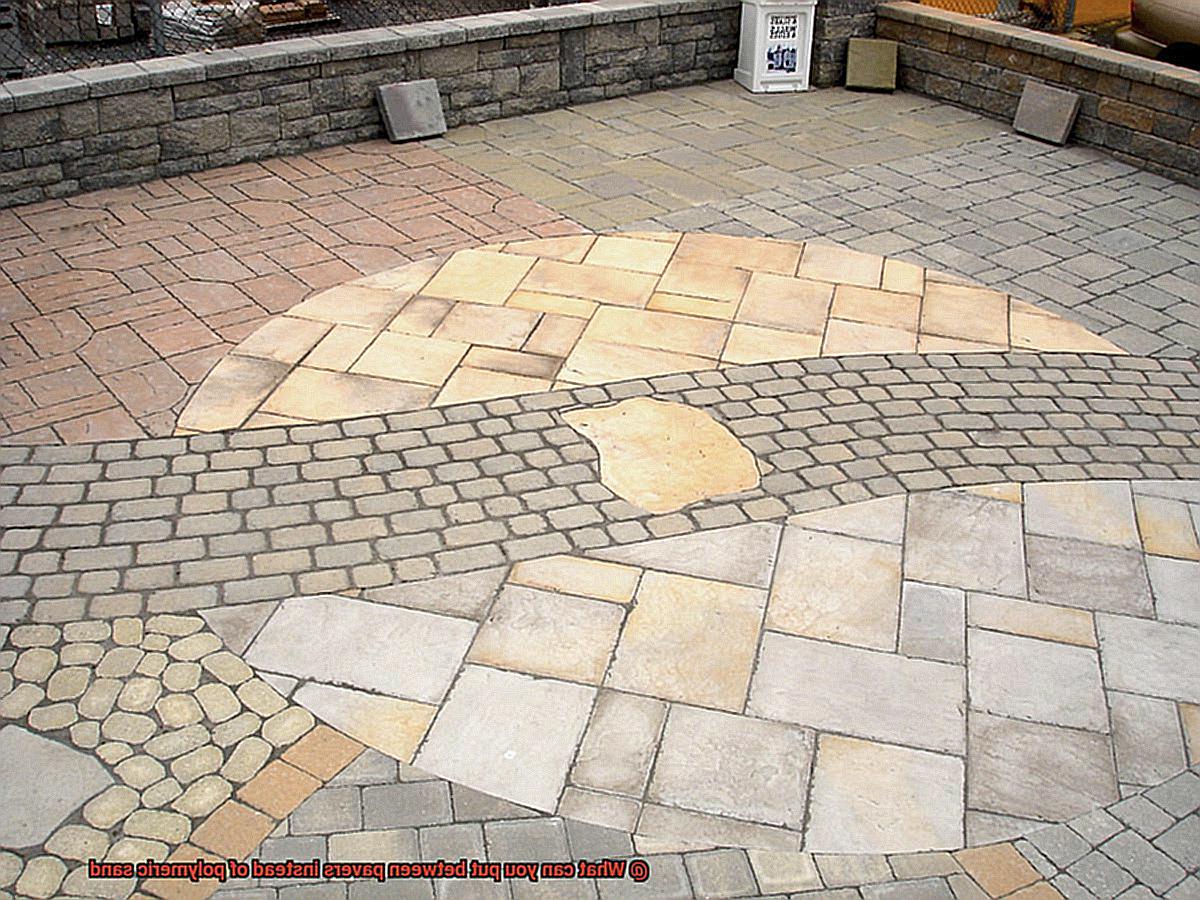
Alternatives to Polymeric Sand
When it comes to filling the gaps between your pavers, polymeric sand is not the only option. Fortunately, there are several alternatives available that can provide similar benefits while adding their own unique touch to your outdoor space. Let’s explore some of these alternatives in more detail:
- Crushed stone or gravel: Not only does this material fill the gaps between pavers, but it also provides a stable base and prevents weed growth. With a variety of sizes and colors available, you can customize the look to match your paver installation perfectly.
- Sand and cement mixture: By combining one part cement with three parts sand and adding water, you create a more solid and durable fill material compared to regular sand. This sand-cement mixture is applied between the pavers, compacted, and allowed to dry, ensuring a strong joint.
- Moss or grass: For those who prefer a natural look, planting moss or grass in the gaps between pavers is an excellent choice. These living materials not only add greenery but also help with water absorption, reducing runoff and promoting a healthier environment. Keep in mind that moss and grass may require regular maintenance and care to keep them looking their best.
- Colored sand: If you’re feeling more adventurous, colored sand can be used instead of polymeric sand. With various hues available, you can mix colored sand with regular sand to achieve the desired color and create unique designs that add visual interest to your paver installation.
- Synthetic jointing materials: Lastly, there are synthetic jointing materials made from rubber or resin. These flexible strips or sheets are placed between the pavers, providing stability while allowing for movement without cracking or shifting.
Regular Sand
When it comes to filling the gaps between pavers, regular sand is a popular choice that offers numerous advantages. It provides easy installation, excellent drainage capabilities, and a natural aesthetic appeal. However, homeowners should also be aware of potential drawbacks such as periodic re-application and weed growth. In this article, we will delve into the pros and cons of using regular sand as a filler for paver gaps.
Pros of Using Regular Sand:
- Easy Installation: Compared to polymeric sand, regular sand is incredibly easy to install. Simply pour it into the gaps between pavers and sweep it into place. This saves time and effort during the installation process.
- Excellent Drainage: Regular sand’s porous nature allows water to flow through easily, preventing the accumulation of moisture that can lead to mold or mildew growth. This feature is particularly beneficial in areas with heavy rainfall or high humidity.
- Natural Aesthetic Appeal: Regular sand blends seamlessly with the pavers, creating a natural and traditional look that enhances the overall aesthetic appeal of your outdoor space. It provides a rustic charm that many homeowners find appealing.
Cons of Using Regular Sand:
- Periodic Re-application: Due to its loose nature, regular sand may require periodic re-application over time. Foot traffic, heavy rain, or wind can displace the sand, necessitating its replenishment to maintain the stability and integrity of the paved area.
- Weed Growth: While regular sand helps deter weed growth to some extent, weeds may still find their way through the gaps between pavers over time. Using a weed barrier fabric underneath the sand can minimize this issue.
Regular sand offers several advantages for filling gaps between pavers, including easy installation, excellent drainage, and a natural aesthetic appeal. However, it’s important to consider potential drawbacks such as periodic re-application and weed growth.
By weighing the pros and cons, you can make an informed decision that suits your specific needs and ensures a beautiful and durable paved area.
Crushed Stone or Gravel
When it comes to filling the gaps between your pavers, you have a few options to choose from. However, one material that stands out is crushed stone or gravel. Not only does it provide a clean and polished look to your outdoor space, but it also offers several advantages over other materials like polymeric sand.
First and foremost, let’s talk about cost. Crushed stone or gravel is often more cost-effective than polymeric sand. This means that you can save some money while still achieving the same desired result. Who doesn’t love saving money?
Durability is another key factor to consider. While polymeric sand can deteriorate over time, crushed stone or gravel is built to last. It can withstand heavy foot traffic and extreme weather conditions without losing its integrity. This means that you won’t have to worry about constantly replacing or repairing the material, saving you time and money in the long run.
Installation is also a breeze when it comes to crushed stone or gravel. Simply clean the paver joints, spread the material evenly, and sweep off any excess. To ensure stability and prevent shifting, use a compacting tool to firmly pack the crushed stone into place. It’s as easy as that.
But that’s not all – let’s take a closer look at the pros and cons of using crushed stone or gravel:
Pros:
- Cost-effective compared to polymeric sand.
- Durable and long-lasting.
- Easy installation process.
- Provides excellent drainage.
- Available in various sizes and types for aesthetic appeal.
Cons:
- May need periodic maintenance and re-application.
Weed growth may occur if not properly maintained.
In conclusion, crushed stone or gravel is a versatile and durable option for filling the gaps between your pavers. Its cost-effectiveness, durability, ease of installation, and excellent drainage make it a popular choice among homeowners and professionals alike.
Mortar or Concrete Mix
Well, hold onto your hats because I’ve got some fantastic news for you. There’s a game-changing alternative to polymeric sand that will not only give your pavers a solid and durable surface but also save you from constant maintenance.

Enter mortar or concrete mix. These magical concoctions, consisting of cement, sand, water, and sometimes gravel, have long been used for larger projects like sidewalks and driveways. But here’s the exciting part – they can work wonders as a filler between your pavers too.
Let’s dive into the nitty-gritty of using mortar or concrete mix as an alternative to polymeric sand. First things first, gather all the materials you’ll need – cement, sand, water, and a trusty trowel for application. And don’t forget to follow the manufacturer’s instructions for the perfect mixing ratios.
Now, before you get carried away with excitement and start slapping on that mortar or concrete mix, it’s crucial to prepare the area properly. Bid farewell to any existing sand or debris between the pavers and ensure that the gaps are clean and dry. Trust me when I say this step is absolutely vital for a successful application.
Once you’re ready to roll, grab your trowel and start applying the mortar or concrete mix between the pavers. Take your time with this step – it’s all about achieving an even distribution that fills those gaps completely. You want a flawless finish that will leave your neighbors green with envy.
Now comes the waiting game. Allow the mortar or concrete mix to dry and cure properly before subjecting it to foot traffic or heavy loads. Remember, patience is key here. Once it’s all dried up, seal those pavers to protect them from moisture and potential damage.
And voila. You’ve just transformed your outdoor space into a solid and stunning oasis. Say goodbye to those pesky weeds and shifting sands and say hello to a low-maintenance, long-lasting solution. Your pavers will be singing your praises.
But before you jump headfirst into this project, let’s talk safety. As with any DIY endeavor, it’s crucial to prioritize your well-being by wearing protective gear like gloves and goggles. Safety should always come first.
Polymeric Gravel Stabilizer
In this blog post, we will delve into the fascinating world of polymeric gravel stabilizer, a game-changing solution for filling the gaps between pavers.
Advantages:
- Weed Control: Bid farewell to those relentless weeds that infiltrate your paver joints. Polymeric gravel stabilizer forms an unbreakable bond between gravel particles, making it nearly impossible for weeds to penetrate. Spend less time on tedious maintenance and more time relishing your outdoor space.
- Enhanced Stability: The adhesive in polymeric gravel stabilizer creates a rock-solid and cohesive layer, preventing individual stones from shifting or becoming loose. Kiss goodbye to wobbly pavers underfoot. Rest assured that your paved area can withstand anything life throws its way.
- Water Permeability: Unlike conventional mortars or concrete, polymeric gravel stabilizer allows water to pass through and drain away. No more unsightly puddles or stagnant water ruining the allure of your pavers. Keep your outdoor space looking impeccable and safeguard it from long-term damage caused by trapped moisture.
- Aesthetic Appeal: Flaunt the natural color and texture of your chosen gravel or stones with polymeric gravel stabilizer. The transparent adhesive does not alter the appearance of the materials used, allowing their beauty to radiate. Create an awe-inspiring outdoor space without compromising on functionality.
Disadvantages:
- Compatibility Concerns: It is important to note that polymeric gravel stabilizer may not be suitable for all types of pavers or applications. It is typically recommended for use with porous materials such as gravel, crushed stone, or flagstone. Non-porous materials like clay or concrete pavers may not provide the necessary absorption for the adhesive to bond effectively.
- Application Limitations: While applying polymeric gravel stabilizer is relatively straightforward, attention to detail is crucial. It is essential to follow the manufacturer’s instructions and allow sufficient curing time for optimal results. Additionally, regular sweeping or rinsing with water is necessary to keep the surface clean and prevent debris buildup.
Polymeric gravel stabilizer offers a plethora of advantages, including weed control, enhanced stability, water permeability, and minimal maintenance.
However, it is vital to consider the specific requirements of your project and the compatibility of the adhesive with your chosen pavers.
With careful planning and proper application, polymeric gravel stabilizer can be your gateway to a weed-free and stable paver surface that will endure the test of time.
Permeable Paver Joint Fillers
Permeable paver joint fillers are the answer to your paver patio or driveway woes. Fed up with weeds and poor drainage? These innovative alternatives to polymeric sand will transform your outdoor space into a durable and weed-free paradise.
Crushed stone or gravel is a popular choice for filling the gaps between pavers. Not only do these fillers provide stability, but they also come in various sizes and colors, allowing you to create a unique and visually appealing look. The interlocking stones promote water drainage, ensuring no pesky puddles ruin your outdoor experience.
If you’re looking for an eco-friendly option, consider organic fillers like moss or grass. These natural materials not only add a touch of greenery but also help with water absorption. Keep in mind that regular maintenance is required to keep them healthy and prevent weed growth.
For a low-maintenance solution with a natural appearance, synthetic fillers are the way to go. Rubber or plastic options mimic the look of natural stone or gravel while providing durability and excellent water permeability. Easy to install and requiring minimal upkeep, these fillers are a hassle-free choice.
Porous concrete joint fillers take water flow capabilities to the next level. By combining regular concrete with a special aggregate, small voids are created that allow water to pass through and drain away. No more worrying about water buildup on your pavers.
Synthetic Grass or Artificial Turf
In this comprehensive guide, we’ll delve into the world of permeable paver joint fillers, exploring the pros and cons of using synthetic grass or artificial turf as alternatives to polymeric sand. So grab a refreshing drink, sit back, and let’s dive into the lush world of synthetic grass and artificial turf.
Advantages of Synthetic Grass:
- Comfort: Imagine the feeling of walking barefoot on a soft and plush surface. That’s exactly what synthetic grass offers. It provides a comfortable and inviting surface, perfect for high-traffic areas like patios or walkways.
- Low Maintenance: Say goodbye to watering, mowing, and fertilizing. Synthetic grass requires minimal upkeep, saving you both time and money in the long run. Spend your weekends relaxing instead of tending to your lawn.
- All-Year Appeal: No matter the weather conditions, synthetic grass remains green and lush, ensuring a visually appealing outdoor space all year round. Say farewell to brown patches during dry spells or muddy messes after heavy rain.
- Durability: While synthetic grass may have a higher upfront cost compared to other options like polymeric sand, it’s a long-lasting investment that provides excellent value over time. Say goodbye to worries about wear and tear.
Disadvantages of Synthetic Grass:
- Initial Cost: It’s true that synthetic grass can be pricier than other fillers initially. However, view it as an investment in creating a beautiful outdoor oasis that will make your neighbors green with envy.
- Proper Installation: To ensure proper drainage and prevent issues like water pooling or weed growth, it’s crucial to choose a high-quality synthetic grass designed specifically for filling paver gaps. Don’t skimp on installation.
Advantages of Artificial Turf:
- Realistic Appearance: Artificial turf is designed to mimic the look and feel of natural grass, providing a visually appealing and realistic outdoor space. Get the beauty of a perfectly manicured lawn without the maintenance.
- Versatility: Artificial turf is available in various colors, textures, and pile heights, allowing homeowners to customize their outdoor space according to their preferences. Create a vibrant and unique oasis that suits your style.
- Low Maintenance: Like synthetic grass, artificial turf requires minimal maintenance. No more wasting time on mowing, watering, or fertilizing. Spend your weekends enjoying your beautiful outdoor space instead.
Disadvantages of Artificial Turf:
Heat Retention: Artificial turf can retain heat, making it uncomfortable to walk on during hot summer days. Consider providing shade or incorporating cooling features like misters to combat this issue.
NVNjXMnOdlA” >
Conclusion
In conclusion, there are several alternatives to polymeric sand that you can use between pavers.
One option is crushed stone or gravel, which provides a stable base and allows for water drainage. Another option is regular sand, although it may require more frequent maintenance to prevent weed growth and erosion.
Additionally, there are specialized jointing sands available that are made from natural materials like clay or crushed granite. These sands harden when exposed to moisture, creating a solid and durable joint between pavers.
These fillers allow water to pass through them, reducing runoff and promoting groundwater recharge.

